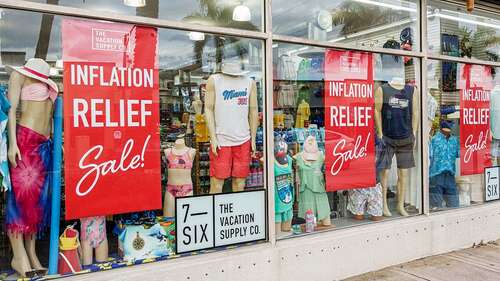Former Reagan economist Art Laffer discusses inflation, recession concerns and the impact of the election on the economy.
Inflation rose more than expected in September thanks to a jump in energy and housing costs, underscoring the challenge of taming price pressures within the economy.
The Labor Department said Thursday that the consumer price index, a broad measure of the price of everyday goods including gasoline, groceries and rent, rose 0.3% in December from the previous month, more than expected.
Prices climbed 3.4% from the same time last year, coming in above both the expectation from Refinitiv economists and the 3.1% gain recorded in November.
Other parts of the report indicated that inflation is continuing to retreat, albeit slowly. Core prices, which exclude the more volatile measurements of food and energy, climbed 0.3%, or 3.9% annually. Both of those figures are slightly higher than estimates; however, it marked the first time since May 2021 that core inflation fell below 4%.
The report indicates that while inflation has fallen considerably from a peak of 9.1%, it remains well above the Federal Reserve’s 2% target.
“Today’s inflation report reinforces the notion that the market had gotten a little overexcited around the timing of rate cuts,” said Seema Shah, chief global strategist at Principal Asset Management. “These are not bad numbers, but they do show that disinflation progress is still slow and unlikely to be a straight line down to 2%.”
High inflation has created severe financial pressures for most U.S. households, which are forced to pay more for everyday necessities like food and rent. The burden is disproportionately borne by low-income Americans, whose already-stretched paychecks are heavily affected by price fluctuations.

A window display at The Vacation Supply Company on Collins Ave. in Miami Beach, Florida. (Photo by: Jeffrey Greenberg/Universal Images Group via Getty Images / Getty Images)
This is a developing story. Please check back for updates.



